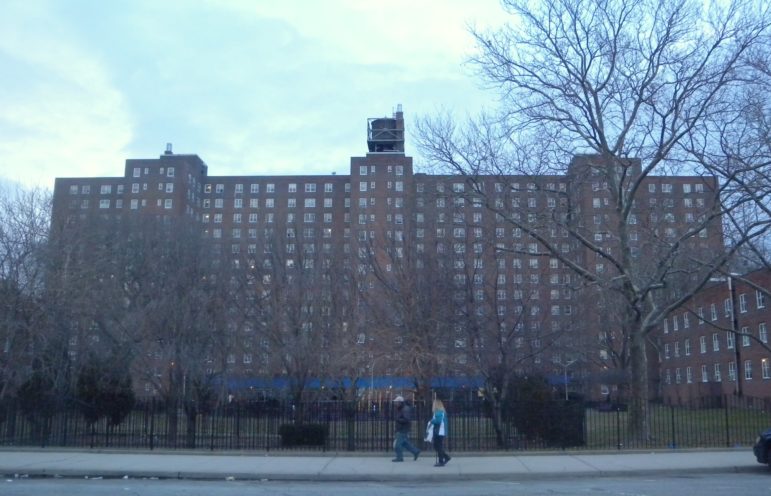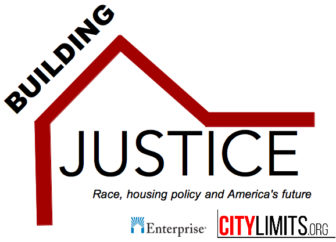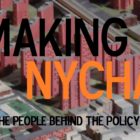
Jim Henderson
The Red Hook Houses
A cascade of crises is forcing America to confront the racism of its past and present—from overt acts of hate to subtler injustices that shape our society. Over 16 weeks, City Limits and Enterprise Community Partners will feature prominent New Yorkers’ views on how race and housing policy intersect to create a legacy each of us must confront, and the way forward we should take together. These are not necessarily views we endorse. But they are views we fully believe are important to share with each other. Here is the 13th post in our series. Read the rest here.
* * *
New York’s public housing system is complicated, antique and essential. To fix the system, and preserve this crucial housing resource (home to approximately half a million New Yorkers), we need to explore the built-in, historical biases that shape public policy related to the New York City Housing Authority (NYCHA).
Public housing began in the 1930s as an urban strategy to clear the slums, put people to work, and create a new vision of urban living. White New Yorkers (Italians, Jews, the Irish, etc.) comprised the majority of NYCHA residents until the late 1950s, most of whom were quite eager to leave behind cramped tenement apartments for modern, elevator buildings. All NYCHA projects, as a result of civil rights activism, were also racially integrated (to varying degrees) by the 1950s. Administrators carefully selected tenant families, white and minority, to make sure they reflected traditional domestic ideals. Public housing was, by and large, a popular program with the public, politicians, and most housing advocates.
This golden age was already showing signs of strains in the late 1950s as whites headed to pricier private housing and the suburbs, design critics savaged the typical red-brick tower blocks and new projects rehoused few of those uprooted for their construction. The planned concentration of public housing in older tenement neighborhoods, which had been viewed as an unquestioned urban upgrade, came under fire from many leaders and social workers as some minority families were forced to move multiple times because of slum clearance.
By the late 1950s public housing flipped to minority majority (Black and Puerto Rican). Since most of those being displaced for housing and other urban renewal projects by this time were minority, and faced limited options in a segregated housing market, applications from minority families greatly outnumbered those from whites. NYCHA’s controversial attempts in the 1950s to socially engineer racially “balanced” (not just integrated) projects failed. The city’s deindustrialization and continued occupational segregation disproportionately affected the new minority residents in the 1960s and 1970s, leading to a slow but steady increase in welfare dependent families within the public housing system.
The trend was clear, as it was in other cities: public housing became minority housing, for those cut off by public policy and occupational or residential segregation from the American economic growth engine. NYCHA projects had a larger working-class tenancy than most American cities, and mixed Puerto Ricans with Blacks (and some whites), but the image and reality of public housing had shifted. The program, at all levels of government, went into permanent decline as politicians tried to distance themselves from what most Americans viewed as a failing, minority social program.
From the 1960s, more or less to the present, what the public and many politicians see and hear about public housing reaffirms this sense of NYCHA as distinct from other affordable-housing programs in the city. The city’s newspapers have focused for decades almost entirely on NYCHA crime, social breakdown, and budget shortfalls. NYCHA may have continued to select for working families, maintained its projects while others knocked them down, and sought new funding sources, but the declining reputation of public housing generally, and NYCHA’s documented management challenges, created a negative “project” image in the five boroughs.
This persistent image of public housing—as a place where only poor, welfare-dependent, minority families live—is simplistic. NYCHA today, for instance, boasts a range of ethnic minorities (the result of post-1965 immigration) and half of families are “working families.” But image trumps reality. The unhappy NYCHA resident in a crumbling apartment, screaming at a community meeting, or grieving over a lost child—the mainstay of well-intentioned NYCHA coverage—has generated surprisingly little sympathy from the general public. Numb to these images, most New Yorkers likely think that fixing NYCHA is impossible.
As a result, federal disinvestment in NYCHA to the tune of billions in the last two decades has not been met by public pressure for an infusion of capital funding from New York City or State. Mayor De Blasio has, to his credit, improved NYCHA’s financial picture by picking up costs for security (and some other needs), but the biggest contribution so far to NYCHA’s unmet capital needs of $17 billion dollars has come from FEMA (approximately $3 billion). It took a devastating hurricane, sadly, to release those funds.
The city and state governments, since the 1980s, have meanwhile found tens of billions of dollars for constructing and preserving “affordable” housing, but NYCHA is largely excluded from these preservation funds. Among the reasons for leaving NYCHA out: the comparative popularity of privately managed affordable housing programs, serving a wider range of income/ethnic groups than public housing; a vain hope for restoration in federal public housing capital funding that will relieve the city or state of any responsibility; and finally, the belief that NYCHA is so beyond saving that investments would be squandered.
The resulting conventional wisdom can be summarized as follows: Poor, minority people live in declining, unsalvageable public housing; “lottery winners” and a more ethnically diverse working/middle class live in quality private affordable housing that merits additional investment. The policies derived from this way of seeing can sometimes seem bizarre. Stuyvesant Town, for instance, boasting a mostly middle-class, white resident population, benefited enormously from the city’s affordable housing preservation programs at the very same time the city’s media outlets continued to report mold and other life-threatening issues in NYCHA buildings.
The broad-brush, negative stereotype of public housing is obscuring a tremendous opportunity. I have had the pleasure, over the past few months, to visit two NYCHA projects (Bronxchester and Campos Plaza) recently converted, with significant government subsidies, from NYCHA to private management. Creative landscaping, bright and secured entrances, apartment renovations, and more have created a new spirit among long-time residents. What the private managers have found is that at least ninety percent of the residents will pay their rent and otherwise be great tenants in exchange for a better quality of life. NYCHA proposes to add more projects to private management under the federal RAD program in the years to come. It is a smart move. New strategies for visual and security improvements are thus being proved in the field.
I would go even further. These experimental conversions demonstrate that the city government is missing a big bet on upgrading its public housing now to a high standard. These are fairly solid buildings, with no underlying mortgages, that can be renovated in interesting ways to the benefit of both residents and their neighbors. Much of what has been accomplished in these demonstration projects could be replicated by NYCHA with additional private participation or by a new generation of NYCHA staff if the city and state will provide the capital funding. The residents of public housing stand ready for a new era of investment. Can New Yorkers change their vision of public housing?
Nicholas Dagen Bloom is Associate Professor of Social Science and Chair of Interdisciplinary Studies and Urban Administration at NYIT.











6 thoughts on “Building Justice: Racial Stereotypes Shape Perceptions of New York’s Public Housing”
There was no white flight in schools, parents saw the next generation of kids on a jail track and not a college one, so they moved and guess what? so did blacks.
The statement must be considered in the context of the dates/ era/ time period of roughly 1950 to 1965 that the author is referencing. A period in which there was indeed increase migration of Whites to the suburbs partly due to the perception of upward mobility in moving to suburbs and largely due to an inherent outcome of robust economy and growth in civil service and non-profit jobs that Whites enjoyed under affirmative action practices ( aka, racial discrimination against others ) in the traditional employment opportunities, like Construction, Policing, Fire-fighting and FIRE! The article’s author very timidly points out, and understates, the level of racial discrimination against Blacks and Hispanics participation in most areas New York and Cities, in general. I suppose there was just so much time, or space, within the paper to make his point! It might helpful for many to really study and think more critically, rather than simply spouting out insults!
Pingback: Community Developments: Affordable Housing Crisis, Fair Housing Ruling – Right Now Help Services
I disagree with privatizing NYCHA. NYCHA is working under the duress of huge Federal cutbacks, which the State and City have not been able to totally make up. Many developments are well run despite the budget shortfalls. Curtailing crime is a function of good policing, not private management. NYCHA managers do send tenants in violation of their lease agreements to housing court for eviction. Rather than subsidize private landlords for affordable housing, I think that expanding public housing, and Mitchell Llama housing would create more permanent affordable housing for the money spent.
Excellent point. NYCHA’s management of its housing portfolio has improved somewhat under the current Mayor DeBlasio and Commissioner, but NYCHA needs massive cash infusion to provide building upgrades for long term sustainability and to meet its operating costs. The lack of funding to Public Housing is due to years of no growth in the funding allocation to Public Housing because of Congressional Budget austerity measures. This is another issue alluded to in the article but fully developed. However, should the funding come largely from the Private sector financing? …Well, it depends on the terms of agreement. These agreements should be monitored very closely to avoid what I can best describe as the Charterization of Public Housing–Lacking in Public accountability and where shareholders and chief executives profit immensely! And we certainly don’t need another leaky boat program, like Mitchell Lama, where buildings at the end of the agreement are subject rapacious Private sector Landlords who raise rents as high as market can yield. The RAD Program is an attempt to explore alternative funding and management solutions. Stay tune to see how and if it serves the real mission, Affordable Public Housing so far! Can the City, State, and Congress in particular do more? Yes, they can …and should!
Yes, excellent point about real concerns! NYCHA’s management of its housing portfolio has improved somewhat under the current Mayor DeBlasio and Commissioner, but NYCHA needs massive cash infusion to provide building upgrades for long term sustainability and to meet its operating costs. The lack of funding to Public Housing is due to years of no growth in the funding allocation to Public Housing, because of Congressional Budget austerity measures. This is another issue alluded to in the article but not fully developed. However, should the funding come largely from the Private sector financing? …Well, it depends on the terms of agreement. These agreements should be monitored very closely to avoid what I can best describe as the Charterization of Public Housing–Lacking in Public accountability and where shareholders and chief executives profit immensely! And we certainly don’t need another leaky boat program, like Mitchell Lama, where buildings at the end of the agreement are subject rapacious Private sector Landlords who raise rents as high as market can yield. The RAD Program is an attempt to explore alternative funding and management solutions. Stay tune to see how and if it serves the real mission, Affordable Public Housing! Can the City, State, and Congress in particular do more? Yes, they can …and should!